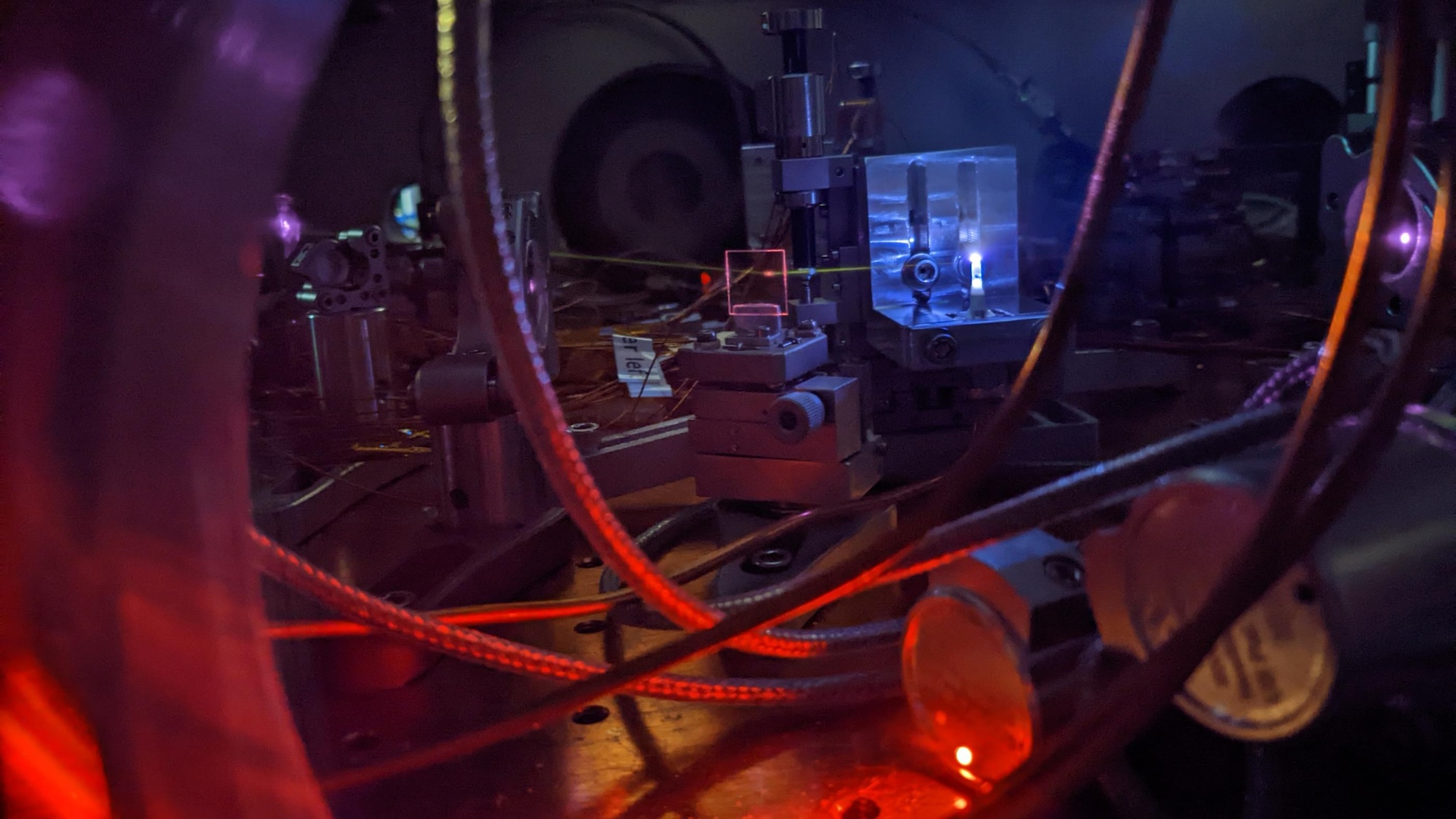

Atomic clocks have served as the world’s most precise means of measuring time for over 70 years, but their reign may be finally coming to an end. According to an announcement from the National Institute of Standards and Technology (NIST) on September 4, an international research team is closer than ever to completing the first prototype of a nuclear clock. When it arrives, experts believe its improved accuracy could not only upgrade everything from GPS and internet speeds to digital security—such a device may also help probe the nature of dark matter and other fundamental particle physics theories.
It might not sound like there is much difference between the two clocks at first glance, but it’s all about scale. Atomic clocks base their timekeeping on measuring the exact vibrations of individual atoms to designate a single second. To do this, a high-powered laser light is trained on an atom of cesium-133, which subsequently excites its electrons into phasing between energy levels at exactly 9,192,631,770 vibrations over a single second’s timespan. Networks of atomic clocks around the planet then sync their systems by this measurement to provide extremely precise coordination for internet communications, mapping, space launches, among many other uses. Since 2014, the primary current standard in the US—a cesium fountain clock located at the NIST—has been capable of keeping time with an uncertainty of 1 second in 300 million years.
Nuclear clocks, however, would apply these concepts at exponentially more fine-tuned parameters. As its name implies, these devices focus on the vibrations from a single nucleus as opposed to those of the larger atom. Laser light trained on nuclei (100,000 times smaller than its overall atom) need higher frequencies, which also ensures more wave cycles per second. This increases the vibrations per second, which subsequently allows for greater accuracy. Theoretically, these result in time uncertainties that make 300 million years seem unreliable in comparison.
“Imagine a wristwatch that wouldn’t lose a second even if you left it running for billions of years,” NIST and JILA physicist Jun Ye said in Wednesday’s announcement. “While we’re not quite there yet, this research brings us closer to that level of precision.”
Generally speaking, nuclei require coherent X-rays to make similar phase jumps—but current technology simply can’t produce the levels of energy required to do this. To work around this hurdle, researchers turned to thorium-229, whose nucleus displays a smaller jump than any other known atom while also only requiring lower-energy ultraviolet light for stimulation.
Once thorium nuclei are suspended in a small crystal, researchers shone UV laser beams on it at predictable intervals while using what’s known as an optical frequency comb—described as an “extremely accurate light ruler”—to count the vibrational “ticks” of the protons and neutrons. The results were a level of precision roughly 1 million times higher than previous wavelength-based measurements. The team also compared their UV frequency to the optical frequency of another of the world’s most accurate strontium-based atomic clocks to establish the first “direct frequency link” between a nuclear transition and an atomic block—a “crucial step in developing the nuclear clock and integrating it with existing timekeeping systems,” according to the NIST.
[Related: The most precise atomic clocks ever are proving Einstein right—again.]
It’s not just time measurement barriers being broken in these experiments, either. The new array also allowed physicists to observe a thorium nucleus’ shape in groundbreaking detail, which the team compares to being able to view individual blades of grass from inside an airplane.
While it’s not a fully completed nuclear clock, researchers have for the first time demonstrated the feasibility of its underlying principles. From here, experts can now begin designing an actual device to put such tools into practice. When completed, nuclear clocks may one day support faster and more reliable internet connectivity, more accurate mapping systems, and facilitate major discoveries within the world of physics, such as detecting dark matter or verifying theoretical constants of nature, all without the need for massive particle accelerators.
